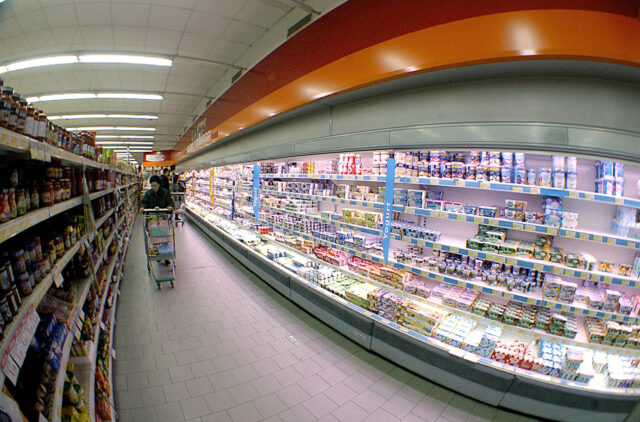- More investment in sustainable food cold chains is needed to reduce hunger, provide livelihoods to communities and adapt to climate change, UNEP and FAO say in a report
- Developing countries could save a staggering 144 million tons of food yearly if they reach the same level of food cold chain infrastructure as richer nations, the report says
- UNEP says separately in a tweet that food loss and waste account for 8% to 10% of global greenhouse gas emissions
- “Green” food cold chains are making a difference in India, where a pilot project reduced kiwi fruit losses by 76% while cutting emissions via refrigerated transport
Greater investment in sustainable food cold chains is needed to reduce hunger, provide livelihoods to communities, and adapt to climate change, United Nations Environment Programme and the Food and Agriculture Organization said in a report.
These systems are critical to keeping food quality, nutritional value and safety, especially as 14% of food produced for human consumption is lost even before it reaches consumers, said UNEP and FAO report “Sustainable Food Cold Chains: Opportunities, Challenges and the Way Forward.”
Separately, UNEP said in tweet plugging the report that food loss and waste account for 8% to 10% of global greenhouse gas emissions.
Increased investment is required if the world is to meet the challenge of feeding an additional 2 billion people by mid-century, said the report released by the UNEP and FAO at the ongoing COP27 climate change conference in Sharm El-Sheikh, Egypt.
“At a time when the international community must act to address the climate and food crises, sustainable food cold chains can make a massive difference,” said UNEP executive director Inger Andersen.
“They allow us to reduce food loss, improve food security, slow greenhouse gas emissions, create jobs, reduce poverty and build resilience – all in one fell swoop.”
Food waste is happening as the number of hungry people worldwide rose to 828 million in 2021, or 46 million more than in the previous year.
The report said that in 2020, nearly 3.1 billion people could not afford a healthy diet, up 112 million from 2019, as the impacts of the COVID-19 pandemic drove up inflation. In 2022, the Ukraine war has threatened global food security.
The report argues that developing countries could save a staggering 144 million tons of food annually if they reached the same level of food cold chain infrastructure as richer nations.
Sustainable food cold chains can also make an important difference in efforts to achieve the Sustainable Development Goals (SDGs), according to FAO Director-General Dongyu Qu.
“All stakeholders can help implement the findings of this report, totransform agrifood systems to be more efficient, more inclusive, more resilient and more sustainable – for better production, better nutrition, a better environment and a better life for all, leaving no one behind,” he said
The food cold chain hasserious implications for climate change and the environment, the report revealed.
Emissions from food loss and waste due to lack of refrigeration totalled around one gigaton of carbon dioxide equivalent in 2017, or roughly 2% of total global greenhouse gas emissions.
Food loss also increases the unnecessary conversion of land for agricultural purposes, as well as use of water, fossil fuels and energy.
Reducing food loss and waste could make a positive impact on climate change, the report said, but only if new infrastructure is designed that uses gases with low global warming potential.
Sustainable food cold chains are already making a difference in countries such as India, where a pilot project reduced kiwi fruit losses of by 76% while reducing emissions through expansion of the use of refrigerated transport.
The report recommends that include quantifying the energy use and greenhouse gas emissions in existing food cold chains, establishing benchmarks, and identifying opportunities for reductions.
Authorities also can implement and enforce ambitious minimum efficiency standards, as well as monitoring and enforcement, to prevent illegal imports of inefficient food cold chain equipment and refrigerants.









